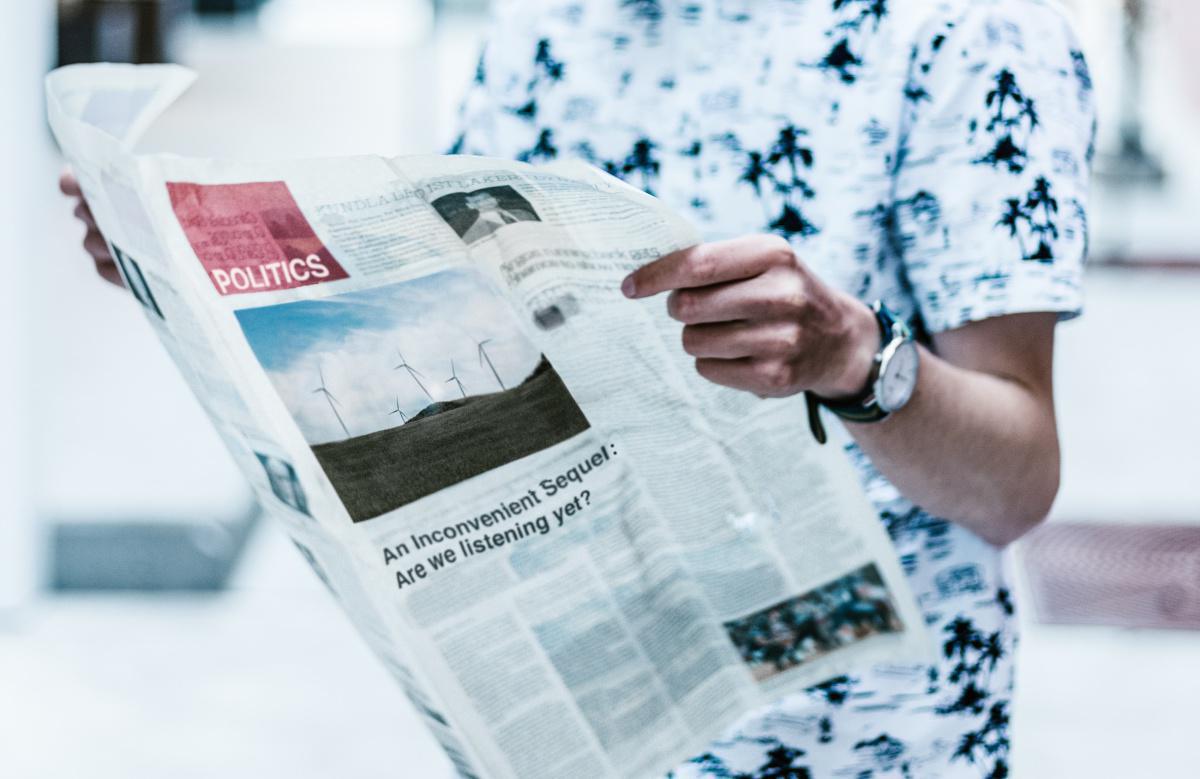When I was a small child my entire family lived in the remote Southern Californian desert. Our only access to electronic media was a gargantuan satellite dish that delivered no less than five hundred channels of scrambled, hissing static. And for reasons I will never understand, it also delivered one unending crystal clear image of Country Music Television (which was of very little use to me, personally).
Living on the edge of all electronic signals, there were two weekly media events around which my young world was centered. The first was the arrival of mail; at this point in human history still paper, most often handwritten, and contained in an envelope also made of paper.
The second media event was the delivery of the super-sized Sunday edition of the newspaper.
I feel for the generations who will never experience the arrival of the Sunday paper. It was this beautifully archaic rag bundle of color and boldness that seemed to contain all the knowledge in the world. I got the comics. My uncle got the sports section. My grandmother got arts and leisure. Whoever was out of work got the classified ads. Dissecting that wonderfully monstrous tome was an entire morning and afternoon for the whole family.
Everything we wanted was right there, in one bundle, delivered to our door. Sure, we all ended up with ink-stained fingertips, but it was more than worth it.
Now, it’s 2018 and I own three separate laptops and a pocket-sized computer that quite literally contains all the knowledge in the world, and I want to watch a movie. Nothing should be simpler at this point in our technological evolution, should it? Our access to media has never been as expansive or instantaneous as it is today. I should be able to conjure up any movie I want in less than thirty seconds.
But the process and structure that has been developed around this amazing technology is designed and constantly refined by human beings, that most fallible of creatures.
What if the movie I want is streaming for free to Amazon Prime members, but I’m subscribed to Netflix instead? What if the movie in question isn’t streaming on either? I could consult a website such as CanIStreamIt.com to find out if the movie I want is available anywhere else. The website suggests I download the app to my phone. Do I really want another app? And even if I do, and I download it, do I really want to add another streaming subscription to my growing collection?
I could — gasp — pay money to purchase the movie digitally, a la carte. But from where? Is it cheapest on Amazon? Is it cheapest on YouTube? Do I want to rent it or buy it? It’s cheaper in standard definition, but would I enjoy it more in high definition? Is my computer’s media player up-to-date enough to play HD? Wait, wait. If I want to rent or buy it on YouTube, is the information in my Google Wallet current?
I could’ve walked to an old-fashioned neighborhood video store and back by the time I figure this all out. I’m willing to bet we’ve all had evenings like this.
When I was a kid, we read the paper, we recycled the paper, and we moved on. We didn’t endlessly accumulate apps and streaming service subscriptions until we were drowning in our own unprecedented access to seemingly everything, except the one thing for which we were searching. There was also only one Sunday paper and it cost a buck-fifty, whereas we find ourselves choosing from dozens upon dozens of streaming services, many charging upwards of ten dollars a month each.
The primary reason streaming service subscription costs remain so high is the trend of password sharing, the plague of the streaming industry. According to Forbes Magazine, more than one-fifth of young adults who stream TV shows borrow passwords from people who do not live with them. 21% of streaming viewers ages 18 to 24 said they had accessed at least one digital video service such as Netflix, HBO Now, or Hulu by using login credentials from someone outside their household. Overall, 12% of adults said they did the same thing.
These are huge dollars left on the table that lead to increased costs, and there’s no way for streaming services to police or stop it.
At least, that used to be the case.
Remember that other exciting weekly media event from when I was a kid? The arrival of the mail? You’ll recall I mentioned that back then it still arrived, safely and securely, in an envelope.
That’s what Envilope has brought back, reinvented for the digital age. They’ve created a virtual envelope that utilizes blockchain technology and military-grade encryption to deliver digital content in a way that gives the sender an unparalleled and historic level of customization, privacy, security, and control over that content.
Now, what goes inside an Envilope? That’s the beautiful part. Everything.
That could easily include a streaming media feed, customized for one person as easily as it is customized for one million people. It would ensure that only the intended recipient can open and view a streaming service’s contents.
Anyone can share a password. No one can share an Envilope’s contents unless the sender allows them to.
I want my Sunday paper experience back. I want the price of streaming subscriptions lowered and the process consolidated. Streaming services want a way to negate password sharing and increase subscriptions and revenue.
The answer for both of us, and possibly the future of streaming media itself, may exist inside the simple yet powerful virtual Envilope.
The consolidation, I believe, will occur naturally. The market simply cannot sustain a separate streaming service for every copyright holder. As giant entertainment conglomerates continue to merge, the number of those copyright holders will shrink dramatically as well.
Consider this future: A bundle of streaming movies, music, TV shows, news, and educational programming, all customized for you. All of it sent through one streaming service, securely and privately delivered in a virtual Envilope to your inbox.
What if you want something a la carte instantly, like a specific movie? You’ll enter the title into a database and an Envilope containing your media pops up.
You won’t be limited to prerecorded movies and TV, either. The virtual Envilope can carry a live stream just as easily. Imagine, on the night of the big fight, having the entire event emailed to you anywhere in the world. Concerts, sports, theater, you’ll watch all of it, live as it happens, in your living room, a hotel room, or even on an airplane.
You get exactly what you want at a consolidated and cost-efficient price, bypassing the searches, comparisons, and app downloads. The streaming service can afford it, because if you get cheeky and try to illicitly share your rented content with others, not only will there be an immutable blockchain record of it, the streaming service can vaporize that content at the touch of a button.
It’s just the process and structure that today’s instant-access technology needs.
Whenever it occurs, the future will be all about delivering streaming media securely and in a way that increases subscriptions and revenue for the distributors. It’ll be about streamlining and consolidating the process for consumers. It’ll be the Sunday paper experience without the ink-stained fingertips.
It’s a future I hope will be delivered, signed and sealed, sooner rather than later.


